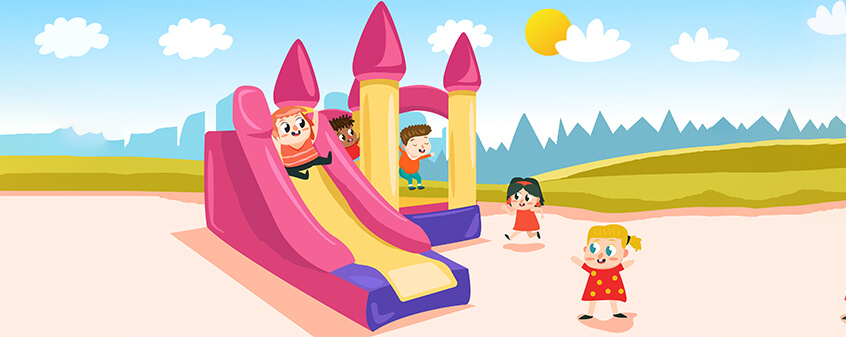A Hindu Shloka says ‘Mata Pita Guru Daivom’, which means ‘Mother Father Teacher God’. But at a subconscious level, it reinstates the position of the mother in a child’s life—first and foremost. The child knows the mother from the time of conception to birth; it’s the mother who nurtures her. Through the mother the child knows the father, the teacher, and finally God. A mother is born when a child is born. The role of the mother too has undergone significant transformation. From being home bound and caring for the needs of the family, a mother today has to balance the world of work and home. She now is a person who has an identity independent of the family, yet is the one person who keeps the family together.
I am a mother but what makes me a mom? The answer to this is not going to be very different from what it is for a father. The expectations from a mother vis a vis a father as far as parenting goes are similar. The difference is in the levels of involvement. If the shloka places the mother before the father, it is because the mother’s influence on the child has far more reaching effects on the subconscious of the child.
Pre-natal bonding
The mother–child bond begins as early as fi ve months into the foetal stage. The baby begins to recognize the mother’s voice. Talk to your baby. Sing to her. Get the other siblings and the father to talk to her. Babies develop a sense of warmth and security. I will discuss this at length later in the book.
Just after birth
Traditionally women went to their parents houses for their deliveries and stayed there till the baby was at least 3 months old. This is the most crucial period in a child’s life. The child identifies the mother within minutes of birth. The bonding that happens in the initial stages of the child’s life is very important. During the initial stages, the mother lives with the child almost 24×7. She bathes, feeds, cuddles, plays, and soothes the baby. The bonding that develops at that time lasts a lifetime. The child develops a feeling of security with the mother.
Through various stages of life
As your child climbs each step, the way you influence your child will keep changing. As a toddler, she will look up to you for comfort, food, and love. As a young girl she will look up to you for worldly wisdom and guidance. As a teenager she will need you as a friend. A young boy too will look upon the mother as his pillar of strength.
From the maids to the local vegetable vendor, children see their mothers interacting with a whole host of people. The way you behave with the different people who play different roles in their lives, will shape how children behave with them in later stages. Talk to them about how they perceive these people, answer their questions and concerns about cultures and traditions. Radha, 25, is a working woman. She has two children. She celebrates all the festivals and functions at home. If it’s Christmas they have a Christmas tree and Santa. If it’s Diwali, they light up their house with candles and make sweets. They play dandiya and also share sweets on Eid. Radha says, ‘Living in a cosmopolitan society, I encourage my children to participate in all festivals. Not only are they culturally more aware, they are growing to be global citizens. If they cannot embrace their neighbour, how will they embrace other cultures when they travel around the world tomorrow?’
This cultural extravaganza in our country is a heritage that our children can imbibe.
How am I different to my daughter and my son?
Mother–daughter
I recently came across this little card on Facebook, which sums up the mother–daughter relationship beautifully. A mother–daughter relationship is a complex one. Recent studies show that female children are most affected by their mothers. ‘In fact, things like body image, attitudes about men, trusting people, dreams, and success are often facilitated (or thwarted) by this relationship. A daughter who feels empowered by her mother, will feel empowered in life. A daughter who does not feel accepted by her mother will never feel accepted by anyone else (or herself ).’
Every daughter has had one fight (at the very least) with her mother. From being the centre of the daughter’s world you will soon find yourself at loggerheads with her over everything— clothes, make up, friends, food. Daughters look at mothers with two very contrasting points of view. A mother can be both friend and foe. They are of the same gender and hence girls instinctively feel they can trust them, and it is for this very reason that the mother also becomes a foe. The mother vies for attention and love of the father. The daughter sees the mother as a threat to her affection towards her father. So as a mom to your little girl, tread gently.
Revathi, 32, a teacher says, ‘I remember interacting more with my mum during my teenage years. She was not only very strict about my academic performance but also about the clothes I wore. She ensured that I attended all the required classes—music, dance, etc. She was like Amy Chua, the tiger mother. But I soon disconnected with her. I did things so that she wouldn’t nag me. I never found any meaning in those activities. The music classes remain a painful testimony to my growing up years. The minute I finished school I joined a college where I had to stay in a hostel, only to be away from her and enjoy the freedom. Today I am more at peace with her. Being a mother, I look at her from a different perspective. But yes, I do feel bad about the fact that it took us so many years to get on the same page.’
At 6 years: ‘Mommy, I love you.’
At 10 years: ‘Mom, whatever.’
At 16 years: ‘My mom is so annoying!’
At 18 years: ‘I wanna leave this house!’
At 25 years: ‘Mom, you were right.’
At 30 years: ‘I want go to mom’s house.’
At 50 years: ‘I don’t want to lose my mom.’
At 70 years: ‘I would give up everything for my mom to be here with me.’
A widely held belief is that a daughter grows up to resemble her mother. Freud established the theory of same sex similarity between parents and children. This theory was later modified by Nancy Chodorow, a feminist sociologist and psychoanalyst.
She brought in the theory that both boys and girls have a special bond with the mother as they grow up. Boys subsequently have to find a role for themselves unlike their mother while girls find it easier to follow the role model in front of them. While mothering a daughter, try to refrain from reliving your life through her. During her teen years remember that she is trying to discover her own identity. Let her be. Do not impose yourself on her. She will soon realize that the friend she is searching for has been with her the whole time. Give her the sense of security to discuss everything. Do not make topics taboo or she will shy away from discussing issues such as boyfriends, sex, and contraception with you. She is losing out on a lot of learning due to your stiff upper lip! Girls place a lot of importance on relationships. Nurture that.
Mother–son
The mother–son relationship in India is almost a venerated one. It is the most spoken about and the most represented one in our mythology and culture. Who can forget Shashi Kapoor’s famous dialogue—‘Mere paas maa hai’? The mother of a son has always garnered more respect in our society. The mother– son relationship is equally complicated. A boy will grow up to become a man, but a mother will continue to remain a mother. Indian society has many instances of ‘mama’s boys’. Boys are mollycoddled by their mothers and pampered to the extent of making them dependant on the mother for everything. The son becomes the reason for the mother’s existence. Even today, in many places the lady is called by her own husband as the mother of their child, for example, ‘Ramu ki maa’. There are many cases when boys are not able to cut off the umbilical cord even after getting married. Just as fathers need to draw a line with the physical intimacy with their daughters, mothers need to a draw line with their sons.
‘As a child, Raj Kapoor often bathed with his beautiful mother and said that ‘seeing her nude left a deep erotic impression on my mind’. And that no doubt inspired his sensual celluloid heroines in wet, see-through saris.’ For a boy, his mother is his first interaction with the female kind. She invariably becomes a role model while choosing a future mate. Hence, your responsibility towards your son is magnified. Your actions today will have a reaction in the later days of the child. D.H. Lawrence, in his novel, Sons and Lovers, brings out how a mother can hold her son’s soul with her. Mrs Morell’s sons are never able to cut off the umbilical cord and as a result are unable to have fulfilling relationships with any girl. Her imprint lies so strong on their psyche that they never have a fulfilling relationship with any partner. ‘The primitive desire for the one parent may also awaken in the child a jealous motivation to exclude the other parent. A critical point of awakening is where the child realizes that the mother has affections for others besides him.’ This may cause the child to cling to the mother.
Indian mothers are known to pamper their sons so much that even as adults they begin to look for their mothers in their wives. Most Indian women will tell you that ‘the other woman’ in their lives is usually not the husband’s girlfriend but his mother. As your son grows up, you have to understand that he is no longer a boy. His raging hormones make him a man. But if you continue to treat him as a baby and ‘mother’ him, he begins to unconsciously get sexual gratification from that. This stops him from looking out of the family for this fulfilment. These instances are stronger when the mother is single.
Thirty-year-old Leela is married to Harish. They have a 5-year-old son. Her only issue with Harish is that he can’t see beyond his mother. Leela experiences great frustration at times. ‘Even for small things like pre-school admission for our son, he tells me that he will admit him only if Ba (his mother) allows it. I’m not a part of any of the decisions! If I want to send him to a summer camp, Ba needs to sanction it. Harish argues that it was her decisions regarding him that helped him achieve success, so why should he not use that same expertise? I see his dependency on his mother and his unwillingness to come out of the sheltered cocoon. He is always the child,’ she rues. A mother is threatened by the presence of another woman in her son’s life. ‘A mother’s bitter, angry, or resentful attitude is equally as damaging to a son’s sense of self-esteem and will ultimately have an effect on his relationships with other women. Mothers who hold on to negative attitudes about men are inadvertently projecting these attitudes on their sons. Boys think that their mothers feel the same way about them as they do about other men and go to great lengths to counter any negativity for fear of losing the maternal love that they cherish.’
Mothers
Gene N. Landrum in his book Entrepreneurial Genius, the Power of Passion has given examples of how fathers have influenced daughters, and mothers their sons. He says ‘The greatest imprinting influence came, most often, from the parent of the opposite gender. Groomed by a fearless mother, Richard Branson grew into an untamed business icon. Eve Branson, a flight attendant when flying was more for thrill than transportation, spent many hours grooming her first born to live on the edge. He rose to meet her challenges and succeeded beyond her wildest expectations as a flamboyant risk taking entrepreneur. Martha Stewart dedicated her first book to her father. He was her mentor, her friend, confidant, and role model for perfection.’
At home we have the very famous father–daughter politicians who changed the history of this country: Pandit Jawaharlal Nehru and Indira Gandhi. Nehru’s influence on Indira is well known and commented on. The influence of the parent on the progeny is eternal. A positive influence on your children will lead to success in their lives.








